Temporary moving from the the stressful habitat to a more hospitable area a nd return when stressful period is over is known as migration.
The correct Answer is:T
Step by step video, text & image solution for Temporary moving from the the stressful habitat to a more hospitable area a nd return when stressful period is over is known as migration. by Biology experts to help you in doubts & scoring excellent marks in Class 12 exams.
Updated on:21/07/2023Topper's Solved these Questions
- ENVIRONMENTAL ISSUESBOOK - TRUEMAN BIOLOGYCHAPTER - ENVIRONMENTAL ISSUESEXERCISE - CHECK YOUR CONCEPT (Ecosystem)
10 Videos
- ENVIRONMENTAL ISSUESBOOK - TRUEMAN BIOLOGYCHAPTER - ENVIRONMENTAL ISSUESEXERCISE - CHECK YOUR CONCEPT (Biodiversity)
14 Videos
- ENVIRONMENTAL ISSUESBOOK - TRUEMAN BIOLOGYCHAPTER - ENVIRONMENTAL ISSUESEXERCISE - CHECK YOUR CONCEPT (Environmental Issues/Pollution)
10 Videos
- ECOSYSTEM BOOK - TRUEMAN BIOLOGYCHAPTER - ECOSYSTEM EXERCISE - MCQ
173 Videos
- EVOLUTIONBOOK - TRUEMAN BIOLOGYCHAPTER - EVOLUTIONEXERCISE - MULTIPLE CHOICE QUESTIONS
335 Videos
Similar Questions
Stress and pressure are both forces per unit area. T in what respect does stress differ from Pressure?
View SolutionOne of the major gift of modern civilisation is the stress. In the mad race to earn more money and the buy more comforts, we have added stress to our life. We donot have proper sleep and this leads to many disorders and diseases. We have to take sleeping pills from time to time
(i) What is the chemical name of the sleeping pills ?
(ii) How do they help in reducing stress ?
(iii) What is the value associated with these ?
View Solution
Knowledge Check
The polymer which can stretched easily by applying small stress and return to it's original shape when stress is removed
ABuna-sBdacronCteflonDBakeliteFigure shows the relationship between tensile stress and strain for a typical material. Below proportional point A, stress is directly proportional to strain which means Young's moudulus (Y) is a constant. In this region the material obeys Hooke's law.
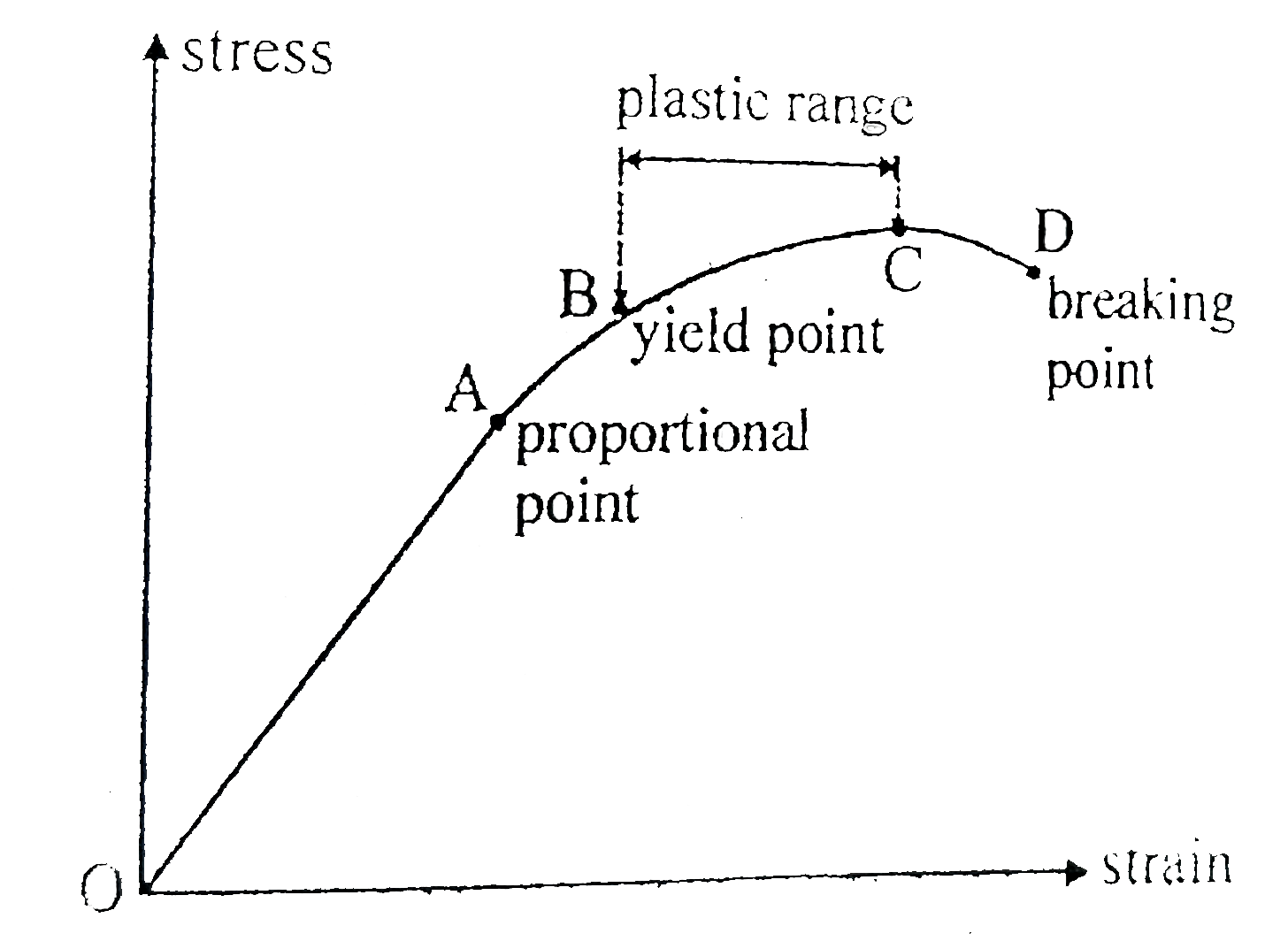
Provided the strain is below the yield point 'B' the material returns to its original shape and size when the force is removed. Beyond the yield point, the material retains a permancnt deformation after the stress is removed. For stresses beyond the yeld point, the material exhibit plastic flow, which means that it continues to elongate for little increases in the stress. Beyond C a local constriction occurs. The material fractures at D (i.e. breaking point). The graph below shows the stress-strain curve for 4 different materials.

Material which is good for making wires by stretching isAMaterial-IBMaterial-IICMaterial-IIIDMaterial-IVFigure shows the relationship between tensile stress and strain for a typical material. Below proportional point A, stress is directly proportional to strain which means Young's moudulus (Y) is a constant. In this region the material obeys Hooke's law.
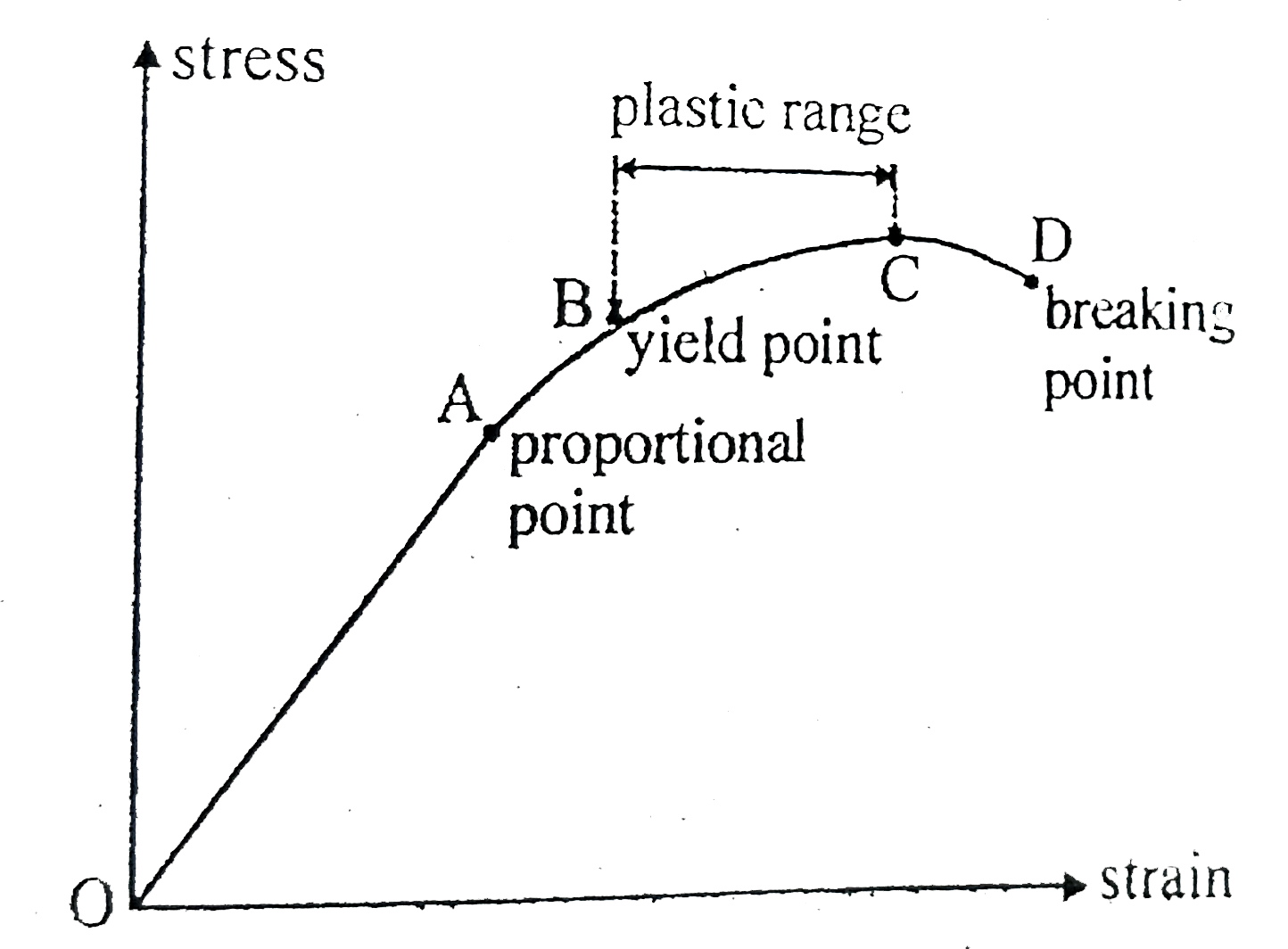
Provided the strain is below the yield point 'B' the material returns to its original shape and size when the force is removed. Beyond the yield point, the material retains a permancnt deformation after the stress is removed. For stresses beyond the yeld point, the material exhibit plastic flow, which means that it continues to elongate for little increases in the stress. Beyond C a local constriction occurs. The material fractures at D (i.e. breaking point). The graph below shows the stress-strain curve for 4 different materials.
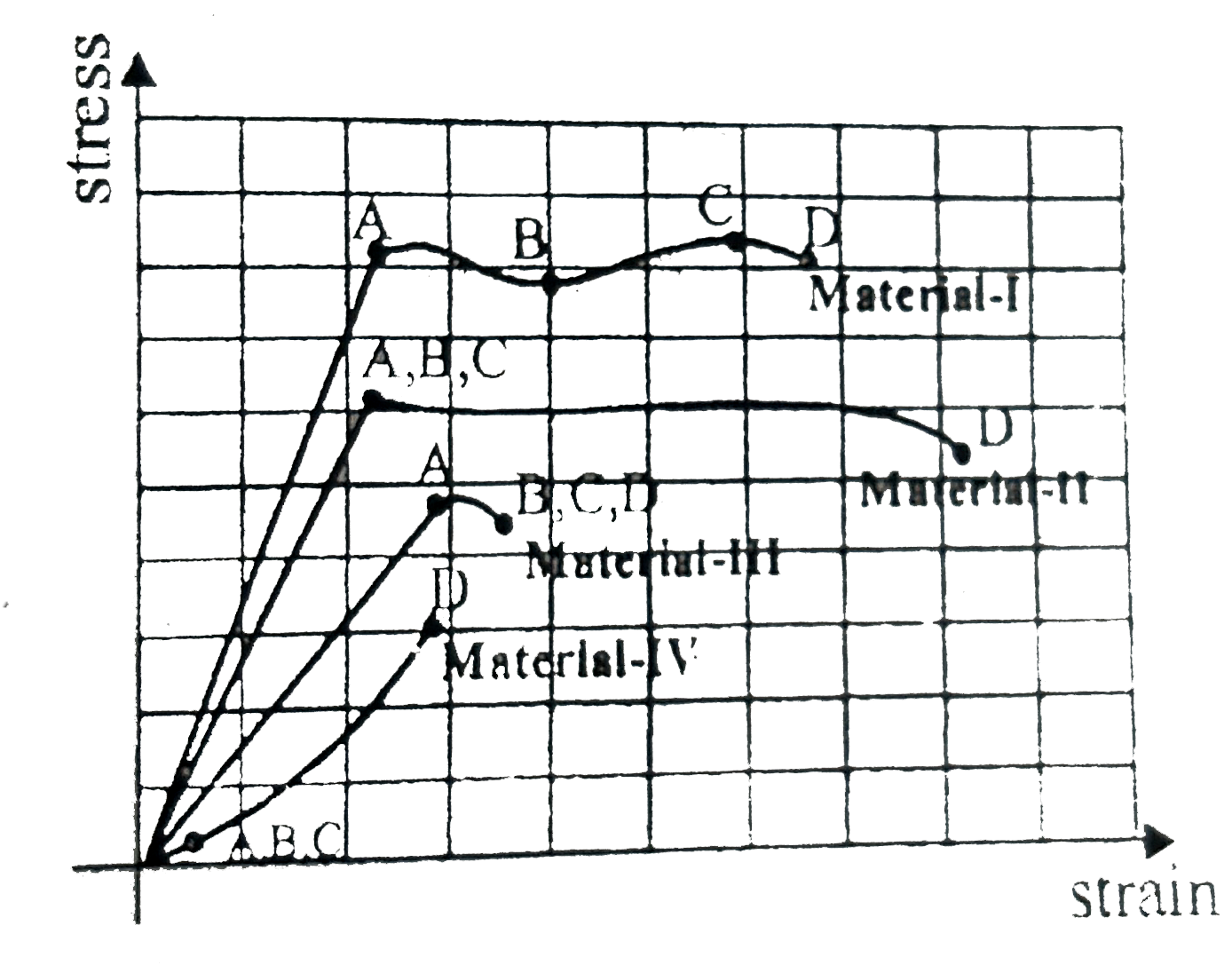
Material which is most brittle isAMaterial-IBMaterial-IICMaterial-IIIDMaterial-IV
When two or more firms come together to create a new business entity that is legally separate and distinct from its parents it's known as
View SolutionA rod area of cross section A is being acted upon by two forces F - F as shown in figure. Consider a section ab of rod whose normal makes angle θ with horimontal. The shear stress upon this section is maximum when θ=180∘n. Find n.
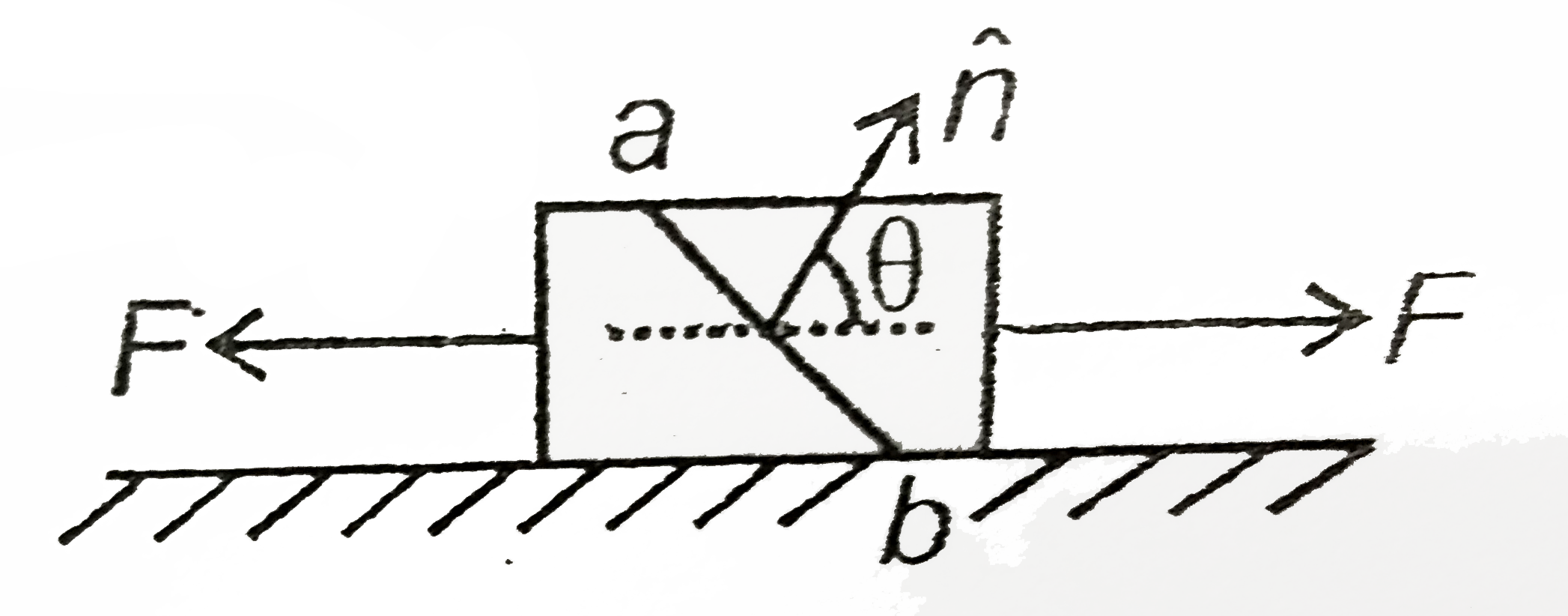
View SolutionFigure shows the relationship between tensile stress and strain for a typical material. Below proportional point A, stress is directly proportional to strain which means Young's moudulus (Y) is a constant. In this region the material obeys Hooke's law.
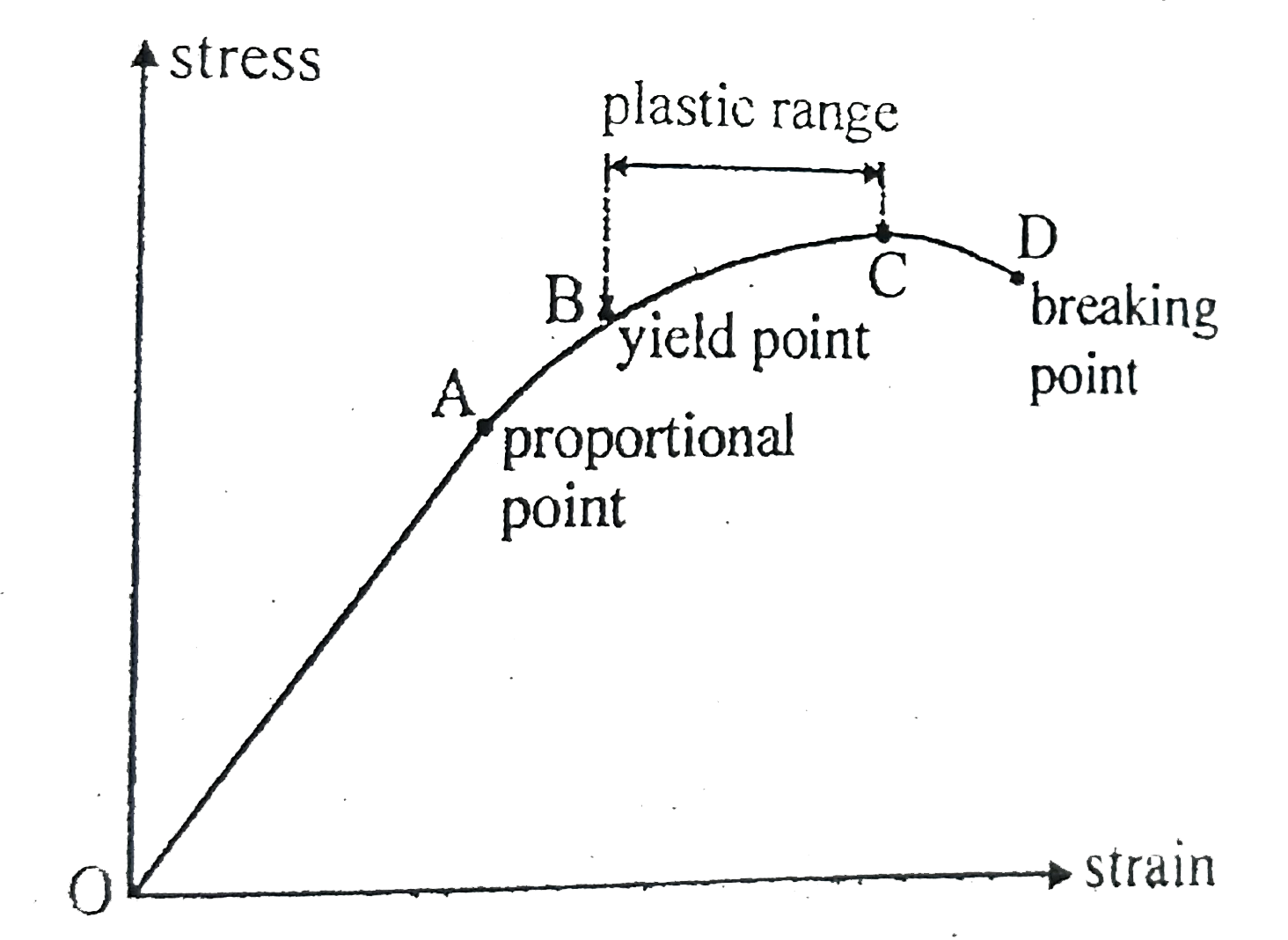
Provided the strain is below the yield point 'B' the material returns to its original shape and size when the force is removed. Beyond the yield point, the material retains a permancnt deformation after the stress is removed. For stresses beyond the yeld point, the material exhibit plastic flow, which means that it continues to elongate for little increases in the stress. Beyond C a local constriction occurs. The material fractures at D (i.e. breaking point). The graph below shows the stress-strain curve for 4 different materials.
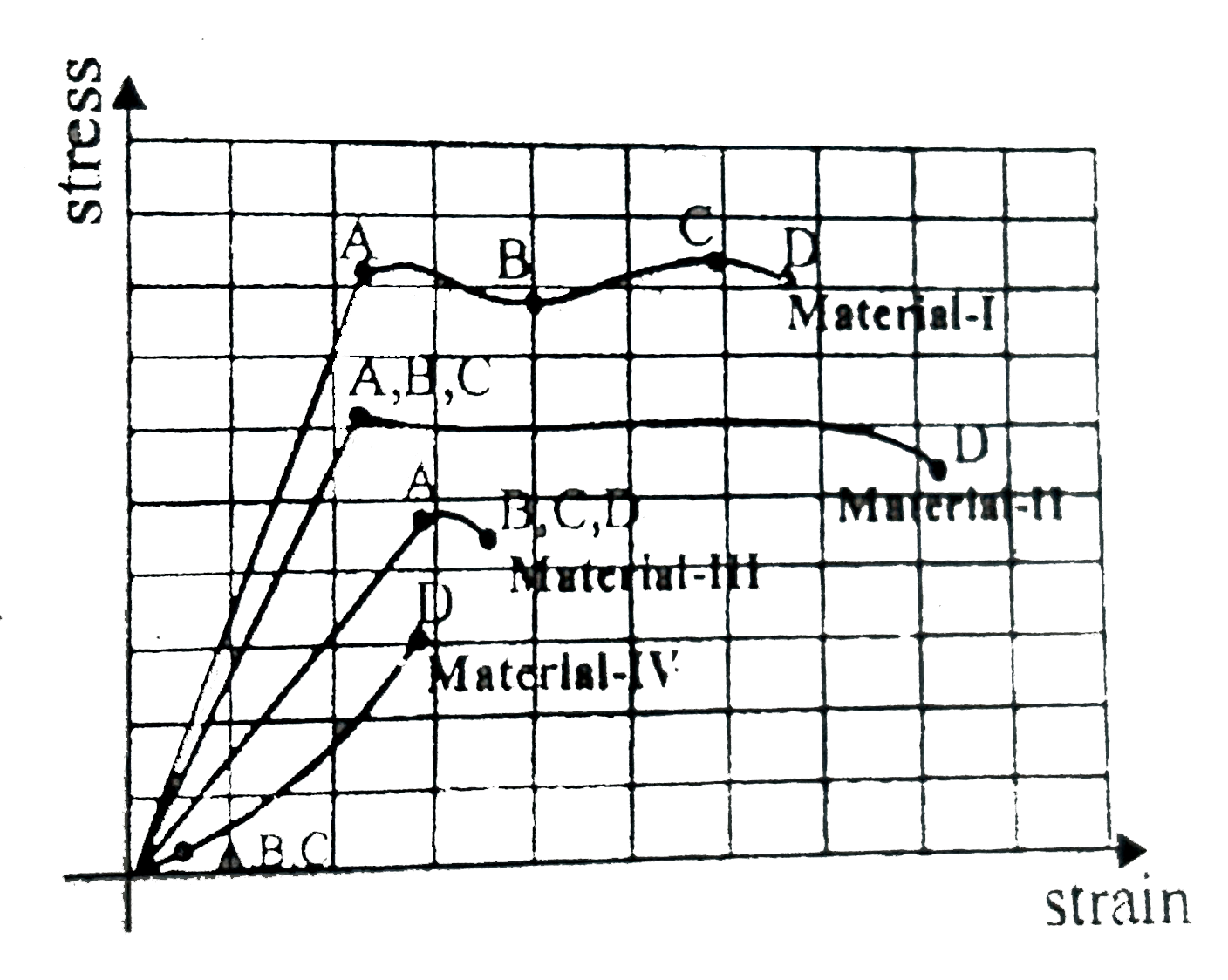
If you bough a new shoe which bites in the beginning and later on fits perfectly, then the material used to making the shoe is
View SolutionAssertion When the solution pressure of a metal is more than the osmotic pressure of the ions, the cations pass into the solution more rapidly leaving the electrode negatively charged.
Reason When the solution pressure of the metal is less than the osmotic pressure of the ions, the cations migrate from solution and get deposited on the electrodes making it positive ly charged.
View SolutionWhen we move from left to right in a period electropositive character
View Solution
